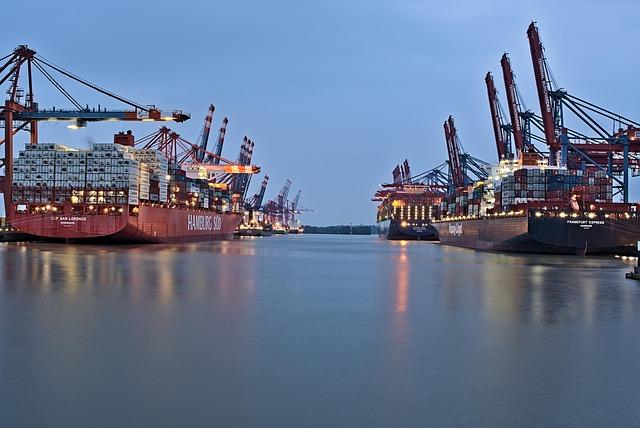India is reportedly contemplating the imposition of import tariffs on select steel products, according to sources familiar with the matter. The move aims to protect domestic steel manufacturers amid rising global competition and fluctuating market dynamics. Details on the specific products and tariff rates are yet to be confirmed, but the development signals a potential shift in India’s trade policy in the steel sector.
India Weighs Import Tariffs on Select Steel Products to Protect Domestic Industry
India is deliberating the imposition of import tariffs on certain steel products to bolster its domestic manufacturing sector amid rising global competition. Industry insiders have revealed that the government is evaluating a targeted list of steel categories that have seen a surge in imports, which is believed to undercut local producers and affect supply chain stability. This move aligns with broader economic measures aimed at strengthening indigenous industries and promoting self-reliance under the “Atmanirbhar Bharat” initiative.
Preliminary recommendations suggest tariffs could be applied on select products including:
- Hot-rolled coils (HRC)
- Cold-rolled coils (CRC)
- Galvanized steel sheets
- Steel pipes and tubes
These products have recorded a significant increase in imports over the past year, with concerns raised about dumping practices from certain exporting countries. The final tariff rates and product list are yet to be finalized and may be subject to consultations with industry stakeholders. Below is a simplified overview of estimated import growth and affected categories:
| Steel Product | Import Increase (2023 vs 2022) | Proposed Tariff Range (%) |
|---|---|---|
| Hot-rolled coils (HRC) | +18% | 10 – 15% |
| Cold-rolled coils (CRC) | +12% | 8 – 12% |
| Galvanized steel sheets | +15% | 12 – 18% |
| Steel pipes and tubes | +10% | 5 – 10% |
Potential Impact on Global Steel Trade and Price Dynamics Explored
The possibility of India imposing import tariffs on select steel products could reverberate significantly through global markets. As one of the world’s top steel consumers and producers, policy shifts in India often set a precedent for trade flows and pricing benchmarks. Market analysts predict that such tariffs may prompt exporters to seek alternative markets or adjust their pricing strategies to maintain competitive edges, potentially leading to a realignment of supply chains. Meanwhile, domestic producers in India might gain a temporary reprieve from imported competition, which could encourage local capacity expansion but also risk higher input costs for industries reliant on steel imports.
Key factors likely to influence price dynamics going forward include:
- Shifts in import volumes: Tariffs could reduce inflows of certain steel categories, creating supply constraints or surpluses depending on the product segment.
- Response from exporting countries: Partners like China and South Korea may recalibrate their export volumes or engage in negotiations to mitigate impact.
- Regional trade agreements: Adjustments in trade deals within South Asia could further complicate or ease tariff effects.
| Steel Product Category | Projected Tariff Impact | Potential Price Change (%) |
|---|---|---|
| Flat-rolled products | Moderate reduction in imports | +8% |
| Long products | Significant supply limitation | +12% |
| Stainless steel | Minimal change due to niche market | +3% |
Experts Recommend Strategic Policy Calibration to Balance Industry Growth and Consumer Interests
Industry leaders and policy analysts alike stress the need for a nuanced approach that safeguards domestic producers while maintaining affordability for consumers. They advocate for targeted adjustments to import tariffs that reflect the current market dynamics, avoiding broad-brush measures that could disrupt supply chains or inflate prices. This strategic calibration is seen as essential to fostering a competitive steel sector that can meet growing infrastructure demands without compromising the interests of end-users.
Experts emphasize several key considerations for policymakers, including:
- Selective tariff imposition on specific steel product categories experiencing import surges.
- Periodic review mechanisms to adapt tariffs based on real-time industry performance data.
- Enhanced collaboration with domestic manufacturers to ensure capacity expansion aligns with demand.
- Balanced enforcement to prevent market distortions while promoting innovation and sustainability.
| Policy Focus | Expected Impact |
|---|---|
| Tariff Rate Adjustment | Protects local producers, controls import volumes |
| Market Monitoring | Ensures data-driven decisions, timely revisions |
| Industry Collaboration | Facilitates capacity building, technological upgrades |
| Consumer Price Safeguards | Prevents undue price hikes, supports affordability |
Insights and Conclusions
As India weighs the implementation of import tariffs on certain steel products, industry stakeholders and global markets alike will be watching closely for further developments. The proposed measures reflect the government’s efforts to protect domestic producers amid fluctuating international trade dynamics. Reuters will continue to monitor the situation and provide updates as more details emerge.




